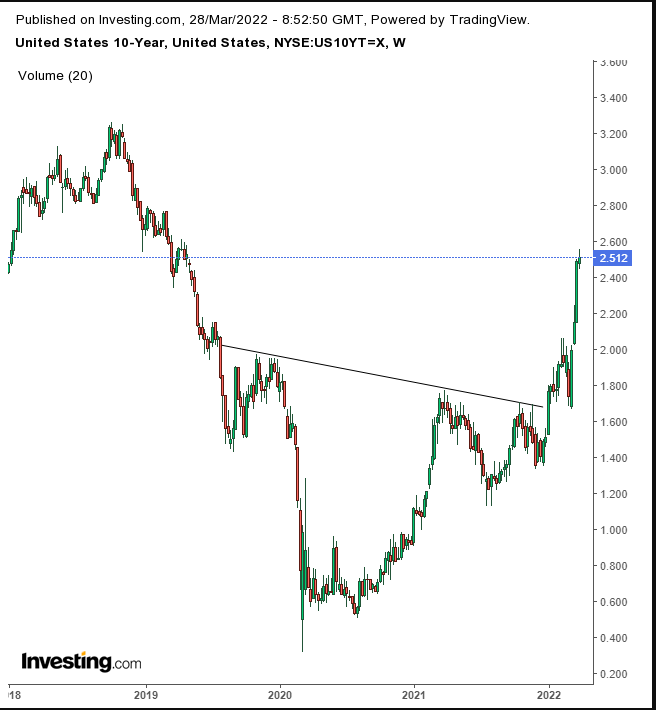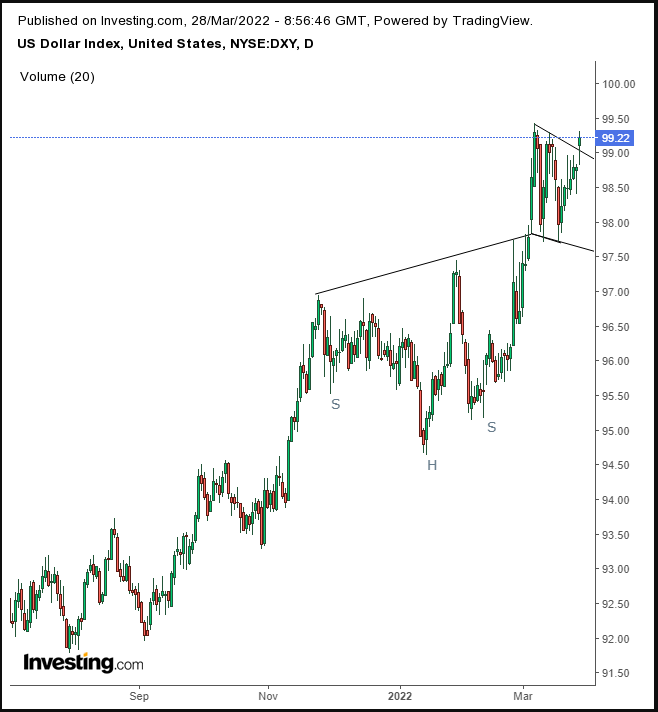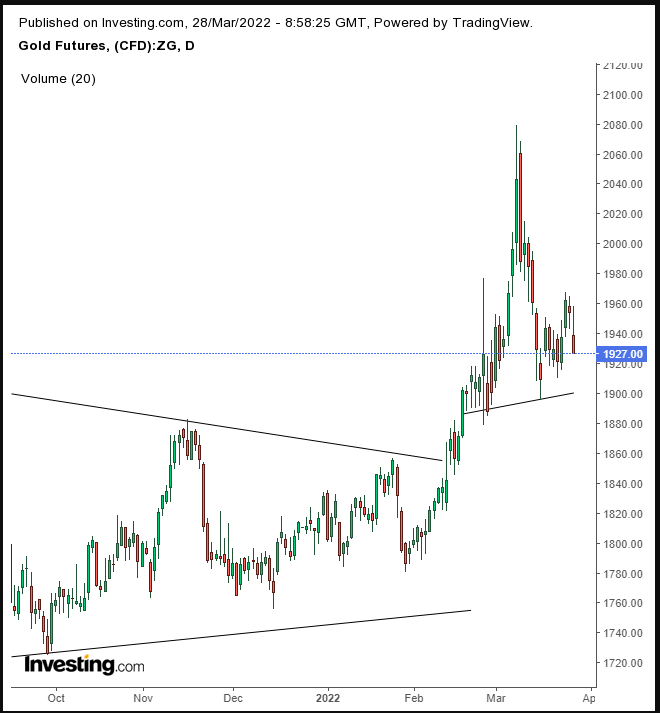- Likely faster Fed tightening pressures bonds
- Increased Chinese social restrictions
- Global supply crunch
- US consumer confidence data is published on Tuesday.
- US JOLTS Job Openings are reported on Tuesday.
- On Wednesday the crude oil inventory report is released.
- The STOXX 600 rose 0.7%
- Futures on the S&P 500 fell 0.2%
- Futures on the NASDAQ 100 fell 0.3%
- Futures on the Dow Jones Industrial Average fell 0.2%
- The MSCI Asia Pacific Index fell 0.8%
- The MSCI Emerging Markets Index fell 1.1%
- The Dollar Index rose 0.4%
- The euro fell 0.02% to $1.0979
- The Japanese yen rose 1.8% to 124.28 per dollar
- The offshore yuan was little changed at 6.3887 per dollar
- The British pound fell 0.3% to $1.3142
- The yield on 10-year Treasuries advanced three basis points to 2.51%
- Germany's 10-year yield rose two basis points to 0.60%
- Britain's 10-year yield increased three basis points to 1.72%
- WTI crude dropped 3.67% to $109.72 a barrel
- Brent crude fell 3.6% to $116.30 a barrel
- Spot gold fell 1.2% to $1,934.42 an ounce
Key Events
Futures on the Dow Jones, S&P 500, NASDAQ 100 and Russell 2000 were wavering in trading on Monday despite rallying European shares as expectations of more interest rate hikes intensify due to the ongoing global economic uncertainty from the war in Ukraine and escalating COVID-19 case numbers in Asia exacerbating the global supply chain.
A selloff in Treasuries caused a partial yield curve inversion.
Global Financial Affairs
Traders are expecting that a faster pace of tightening monetary policy combined with a deteriorating global supply picture to continue to dent stock market valuations.
In Europe, the STOXX 600 Index climbed while in Asia indices were mixed with the Hang Seng closing in the green while the Nikkei and KOSPI slid.
Yields on the 10-year Treasury note topped 2.5% for the first time since April 2019 and above a downtrend line since the last 1980s.
The 5-year yield rose above the 30-year yield, causing a yield inversion for this part of the yield curve. When a shorter yield pays out more than a longer dated yield it indicates that investors do not want to be locked into longer maturity dates which is a leading indicator of a recession.
However, the 5-to-30 spread is not as good as the 3-month to 10-year yield and the 2-year to 10-year spread.
Sovereign bonds in other countries fell as well.
The sharp bond selloff propped yields higher after having completed an H&S bottom.
The dollar opened higher and extended gains to test the Mar. 7 highs. A further climb of just 0.1% would put the greenback at its highest level since May 2020.

The price is bullish after the H&S continuation pattern penetrated the falling flag.
Gold fell on dollar strength.

Technically, the yellow metal continued along a small H&S top after the preceding Symmetrical Triangle's implied target was reached.
Bitcoin climbed for the seventh day in a row, past $47,000 for the first time since Jan. 2.

The digital coin completed a small H&S bottom, which will attempt to take on the much larger H&S top. Note the diminishing volume along with the small pattern.
Oil fell as the resurgence of the coronavirus in China continued and the country's extended curbs exacerbated the outlook for the spiking inflation amid the current supply chain crunch.
